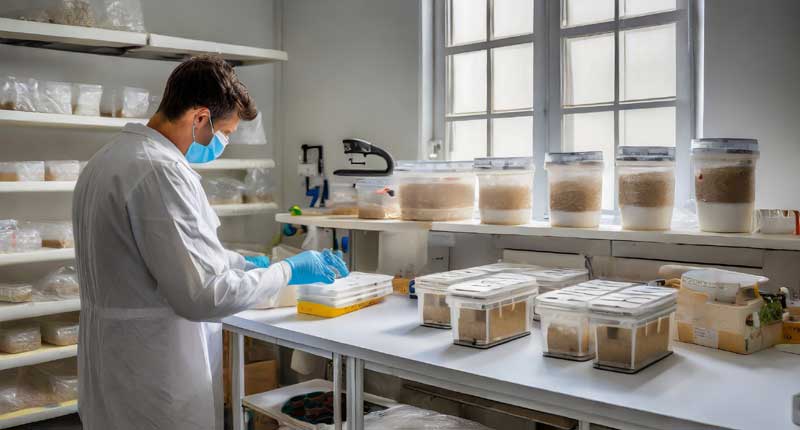Do you want to grow your own mushrooms at home? If yes, then you need to know how to sterilize a room for growing mushrooms. Sterilization is crucial in mushroom cultivation, as it prevents contamination from harmful microorganisms and ensures a healthy and abundant harvest.
In this blog post, you will learn:
-
- Why sterilization is important for mushroom cultivation
- What are the best methods to sterilize a room for growing mushrooms
- How to maintain a sterile environment for your mushroom crops
Let’s get started!
Why Sterilization is Important for Mushroom Cultivation?
Mushrooms are fungi, which means they feed on organic matter and decompose it. However, they are not the only ones who do that. There are many other microorganisms, such as bacteria, mold, and yeasts, that also compete for the same food source. These microorganisms can infect your mushroom substrate and spawn and cause diseases, poor growth, and low yields.
To avoid this, you need to sterilize your mushroom growing room, as well as your substrate and spawn. Sterilization is the process of killing or removing all living organisms and their spores from a material or an environment. By sterilizing your mushroom growing room, you create a clean and safe space for your mushrooms to grow and thrive.
What are the Best Methods to Sterilize a Room for Growing Mushrooms?
There are different methods to sterilize a room for growing mushrooms, depending on the size, layout, and equipment of your room. Here are some of the most common and effective methods:
- Bleach Solution: Bleach is a powerful disinfectant that can kill most microorganisms and their spores.
-
- You can use a bleach solution to wipe down the walls, floors, shelves, and other surfaces of your mushroom growing room. To make a bleach solution, mix one part of bleach with nine parts of water.
- Use a spray bottle or a cloth to apply the solution, and let it sit for at least 10 minutes before rinsing it off with water.
- Make sure to wear gloves, goggles, and a mask when using bleach, as it can irritate your skin, eyes, and lungs.
-

- Hydrogen Peroxide: Hydrogen peroxide is another effective disinfectant that can kill most microorganisms and their spores.
-
- You can use a hydrogen peroxide solution to spray or wipe down the surfaces of your mushroom growing room.
- To make a hydrogen peroxide solution, mix one part of 3% hydrogen peroxide with nine parts of water.
- Use a spray bottle or a cloth to apply the solution, and let it sit for at least 10 minutes before wiping it off with a dry cloth.
- Hydrogen peroxide is safer than bleach, but you should still wear gloves, goggles, and a mask when using it, as it can cause skin irritation and eye damage.
-
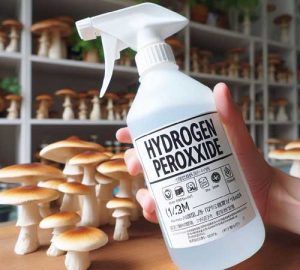
- Heat: Heat is another effective way to sterilize a room for growing mushrooms, as it can destroy most microorganisms and their spores.
-
- You can use a heat source, such as a steam generator, a hot air blower, or a heater, to raise the temperature of your mushroom growing room to at least 80°C (176°F) for at least 30 minutes. This will kill most of the contaminants in your room. However, heat can also damage some of your equipment and materials, such as plastic bags, filters, and thermometers.
- Therefore, you should remove them from your room before applying heat.
- You should also wear protective clothing, gloves, and goggles when using heat, as it can cause burns and injuries.
-
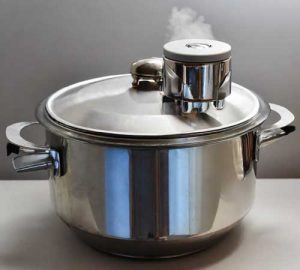
- UV Light: UV light is another effective way to sterilize a room for growing mushrooms, as it can damage the DNA and RNA of microorganisms and their spores and prevent them from reproducing.
- You can use a UV lamp to expose your mushroom growing room to UV light for at least 15 minutes. This will kill most of the contaminants in your room. However, UV light can also harm your eyes and skin, as well as degrade some of your equipment and materials, such as plastic bags, filters, and thermometers.
- Therefore, you should remove them from your room before using UV light. You should also wear protective clothing, gloves, and goggles when using UV light, as it can cause eye damage and skin cancer.
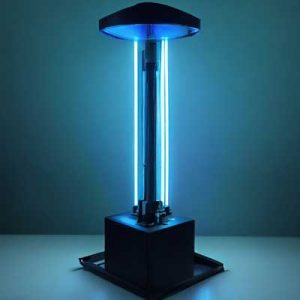
How to Maintain a Sterile Environment for Your Mushroom Crops?
After sterilizing your mushroom growing room, you need to maintain a sterile environment for your mushroom crops. Here are some tips to do that:
- Keep Your Room Sealed: You should keep your mushroom growing room sealed from the outside air, as it can bring in new contaminants.
-
- You can use plastic sheets, tape, or foam to seal the windows, doors, and vents of your room.
- You can also use an air filter or a fan to create positive air pressure in your room, which will prevent outside air from entering your room.
-
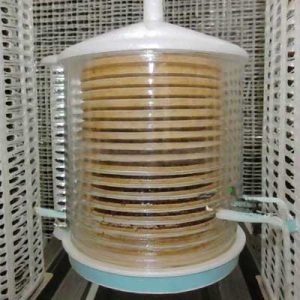
- Wear Clean Clothes and Equipment: You should wear clean clothes and equipment when entering your mushroom growing room, as you can carry contaminants on your body, hair, and shoes.
-
- You can use a disposable suit, gloves, mask, and booties, or a clean set of clothes and shoes that you only use for your mushroom growing room.
- You should also sanitize your hands and equipment with alcohol or bleach before entering your room.
-
- Clean Your Room Regularly: You should clean your mushroom growing room regularly, as contaminants can accumulate over time.
-
- You can use the same methods that you used to sterilize your room, such as bleach, hydrogen peroxide, heat, or UV light, to disinfect your room.
- You should also remove any waste, debris, or spoiled mushrooms from your room, as they can attract pests and diseases.
-
Conclusion
Sterilizing a room for growing mushrooms is essential in mushroom cultivation, as it prevents contamination from harmful microorganisms and ensures a healthy and abundant harvest.
You can use different methods to sterilize a room for growing mushrooms, such as bleach, hydrogen peroxide, heat, or UV light. You should also maintain a sterile environment for your mushroom crops by keeping your room sealed, wearing clean clothes and equipment, and cleaning your room regularly.
This blog post has helped you learn how to sterilize a room for growing mushrooms. If you have any questions or comments, please leave them below. Happy mushroom growing!
